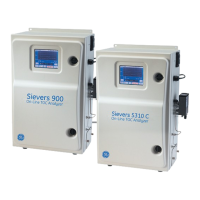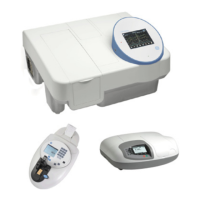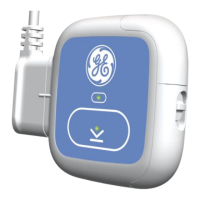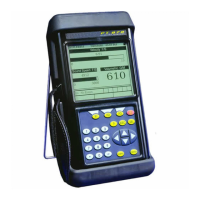GE Analytical Instruments ©2010 81 of 226 DLM 74001-04 Rev. A
Chapter 4: Basic Analyzer Operation
5. Press the Interval button to print the average TOC value for the period of time specified. The options are
as follows: Every Sample, Every Hour, Every 2 Hrs., Every 4 Hrs., or Every 8 Hrs.
Activating Binary Input
You can start and stop analysis with binary input to the Analyzer.
1. Select the I/O tab.
2. Press the Binary Input button.
3. Press the Binary Input button, and select On (or Off if you wish to disable binary input).
4. Press the Start Level button and select High or Low. This value corresponds to the signal that will cause
the Analyzer to start analysis. Confirm the correct value with your remote operations center.
Note that the Analyzer’s flow switch status overrides Binary Input settings; when the flow switch detects loss of
sample flow to the Analyzer, analysis will not begin until sample flow resumes.
Turn off the Binary Input function when performing system protocols, such as calibration.
Setting Alarm Values
The Analyzer has four customizable alarm outputs that can be triggered if the measured data exceeds a set
value or if a warning or error occurs. By default, the alarms are disabled. When external alarms are connected
to the Analyzer, you can set the alarm levels by following the steps below. Instructions for wiring the alarms can
be found in the “Installation” chapter on page 49. On configurations without conductivity measurement, some
options are not available.
1. Select the I/O tab.
2. Press one of the alarm buttons, either Alarm 1, Alarm 2, Alarm 3, or Alarm 4.
3. Press the State button to toggle the alarm output from Off to On.
4. Press the Value button to set the value that triggers the alarm. The options are:
• TOC, TC, IC, or rCond. — The alarm is triggered when a specified value is exceeded. Also press
the Level button to set the alarm threshold.
• Warn/Error — The alarm is triggered when the Analyzer issues a warning or error.
• Standby — The alarm is triggered when the Analyzer goes out of on-line analysis.
• Power Fail — The alarm is triggered when the Analyzer loses power.
• Error — The alarm is triggered when the Analyzer issues an error.
• Warning — The alarm is triggered when the Analyzer issues a warning.
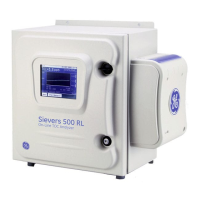
